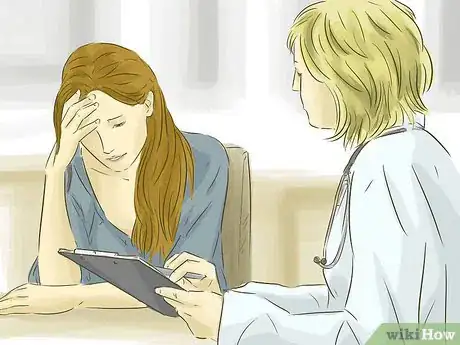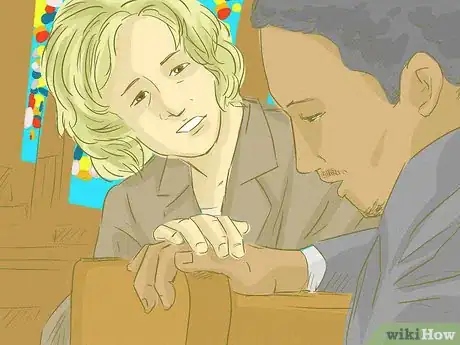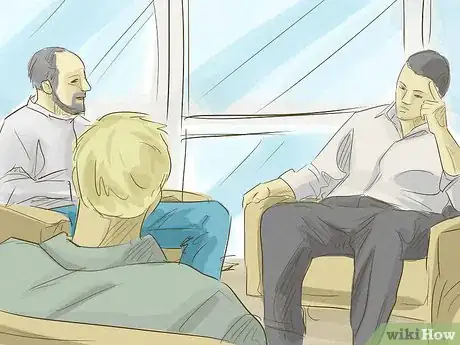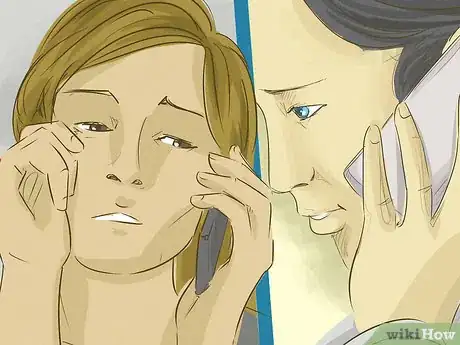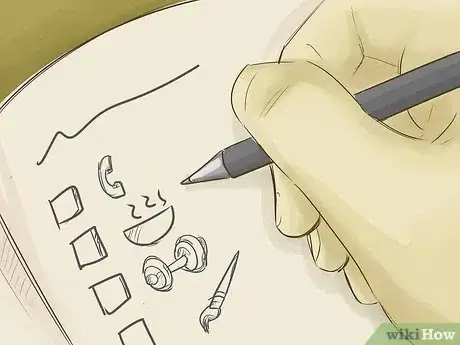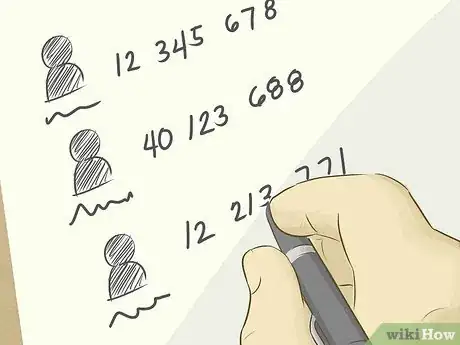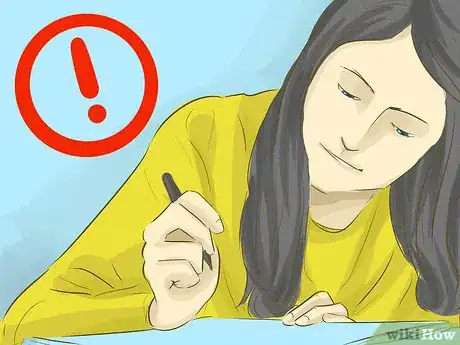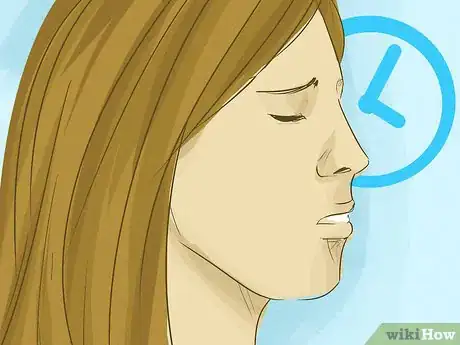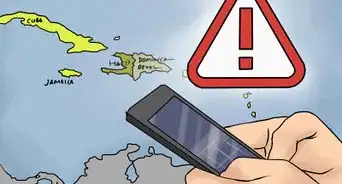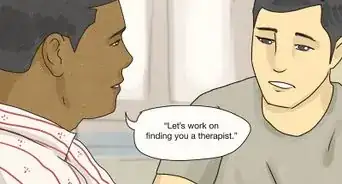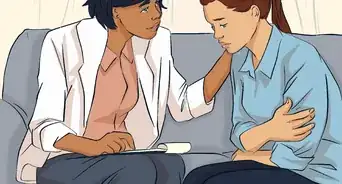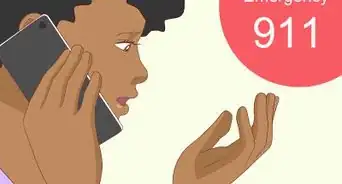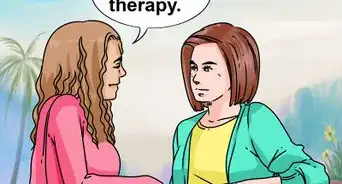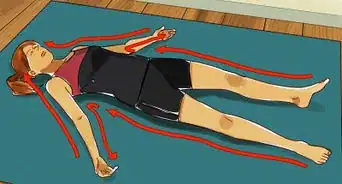This article was co-authored by Trudi Griffin, LPC, MS. Trudi Griffin is a Licensed Professional Counselor in Wisconsin specializing in Addictions and Mental Health. She provides therapy to people who struggle with addictions, mental health, and trauma in community health settings and private practice. She received her MS in Clinical Mental Health Counseling from Marquette University in 2011.
There are 10 references cited in this article, which can be found at the bottom of the page.
This article has been viewed 870,953 times.
Suicidal thoughts happen when the deep pain you're feeling seems impossible to overcome. It might hurt so much that suicide seems like the only way you can find relief from the thoughts and circumstances that are troubling you. But there are other things you can do to get relief and still be alive to feel joy, love, and exhilaration again. Taking immediate action to keep yourself safe, exploring the reasons why you're having suicidal thoughts and making a plan to overcome them whenever they come back will help you to stop the pain without killing yourself.
If you're thinking about suicide and need immediate help, please contact a suicide prevention hotline immediately, such as the 988 Suicide and Crisis Lifeline if you're in the United States, which can be reached by calling or texting 988.
Steps
Seeking Help
-
1Seek help from a mental healthcare professional. People who attempt suicide are more likely to be suffering from a serious mental condition like depression or anxiety. Know that there is help for you.[1]
- If your suicidal feelings were brought on by a specific event, like the grief of being jilted, job loss, or becoming disabled, remember that this kind of situational depression can still be helped by treatment.
-
2Talk to a spiritual leader if you are religious. If you are religious and have access to a spiritual leader, try talking to him/her.[2] Some people prefer talking to people of faith than one trained primarily in psychology. Those called to religious ministry are trained in helping people in crisis, including individuals in despair who may be suicidal.
- If this is something that you believe in, a spiritual leader can help you ease the pain by offering a new perspective and giving you some things to think about.
Advertisement -
3Find a support group. There are support groups, both online and in your community, where you can find comfort by talking to other people who have suicidal thoughts or who have attempted suicide.[3]
- To find a support group, you can ask your mental health professional for information about group meetings, or look online for groups in your local area.
-
4Seek support from people who understand. The most important thing to remember is that no matter why this is happening, you are not alone. Reach out to people who are there for you and who understand how it feels, and want to help. If you're looking for a good place to start, try getting in touch with one of the following services:
- Contact the 988 Suicide and Crisis Lifeline if you're in the United States, which can be reached by calling or texting 988.
- If you're gay, lesbian, bisexual, or trans* call 1-888-THE-GLNH (1-888-843-4564).
- If you're a veteran call 800-273-TALK and press 1.
- If you're a teenager call Covenant House Nine Line at 1-800-999-9999.
- Send an anonymous e-mail to The Samaritans suicide prevention center.
- Call a psychotherapist. Look in your phone book for a list of people in your area. You can also find one, here: http://locator.apa.org/
-
5Call a friend. Tell them how you’re feeling and that you need their help. Ask your friend to remind you of your positive qualities and strengths or to talk about fun times that you’ve had.[4]
- Pick a friend who you think is trustworthy. Talking to untrue friends about your situation will only make it worse since untrue friends will not be there for you.
- Avoid being alone. Make sure that friends and family do not let you out of their sight. If you do not have anyone to watch over you, check yourself into an emergency room to make sure you are not alone. If you are part of a support group, lean on other members of your group for extra support from people who really understand what you’re going through and can help you.
Making a Plan for Coping
-
1Get rid of potential means that you could use to take your life. If you are thinking about dying by suicide, make it more difficult to enact by getting rid of anything that you could use to kill yourself.[5]
- This might include firearms, knives, ropes, or pills.
- If you can't throw out the pills because you need them, give them to a trusted family member or friend who can dish them out to you only as prescribed.
-
2Make a list of things you love. Write down everything you can think of that fills you with joy, or that you have a memory of associating with joy and love. This could be the names of your family members, your pets, your favorite sport, your favorite author, your most beloved films, the foods that remind you of childhood, a place that feels like home, the stars, the moon, or the sun. If it's good, write it down.[6]
- Include things you love about yourself. Write down the traits that are most special to you, including physical traits, personality traits, and so on. Write down what you've accomplished. Write down times you were proud of yourself.
- Include things you're looking forward to. Write down where you someday hope to live, what you plan to create, a job you want to try, children you might have, a partner you might find.
-
3Make a list of good distractions. What has helped to convince you not to take your life in the past? Write it down. Any distraction is a good distraction if it gets you further away from harming yourself. Having a list to turn to when your mind feels too bogged down to remember what to do is going to come in handy in the future.[7] Here are a few ideas:
- Call a friend to talk.
- Eat a healthy meal.
- Go for a walk or get some exercise.
- Paint, write or read.
-
4Make a list of people you can call. Include the names and phone numbers of at least five people, in case someone isn't available when you need to call. Include the names of friends, family members, and acquaintances who are likely to pick up the phone and help.
- Include the names of trusted counselors, psychiatrists, and support group members.
- Write down hotlines you feel comfortable calling.
-
5Make a safety plan. Your safety plan is a plan you read over and follow as soon as you start having suicidal thoughts. Your plan is a personally-tailored list of things you can do to convince yourself not to take your life. When you're having suicidal thoughts, it can be difficult to wrench your mind away and focus on something that will help you. But when you have a plan in place, all you need to do next time the thoughts come is pull out your plan and start going down the list. Keep completing each step on the list until you've reached a point where you feel safe again. Here's an example of a safety plan:[8]
- 1. Read my list of Things I Love. Remind myself of the things that have prevented me from taking my life so far.
- 2. Read my list of Good Distractions. Distract myself from my thoughts with anything I can do that helps. This could be taking a walk in my neighborhood or watching my favorite movie, for example.
- 3. Read my list of People I Can Call. Add friends and family that deeply care about me. Call the first person on the list to talk. Keep calling people until I reach someone who can talk to me for as long as I need to talk.
- 4. Delay my suicide attempt and make my home safe. If I have a suicide plan, promise myself that I'll wait at least 48 hours before I take action on my plan. In the meantime, get rid of pills, sharp objects and other items that could affect my safety.
- 5. Call someone to come stay with me. If no one can stay, call my therapist or a crisis number.
- 6. Go to a place where I feel safe, like my parents' house, a friend's house, or a community center.
- 7. Go to the emergency room.
- 8. Call the Emergency Services.
Trying to Consider Alternative Solutions
-
1Remind yourself that the way you feel is temporary. When you are seriously considering killing yourself, it can be hard to think of alternative solutions to the problems that you are having. One way to try to step back and consider alternative solutions to your problems other than suicide, is to remind yourself that you have not always felt like killing yourself and you won't always feel that way in the future.[9]
- All feelings are fleeting and fluctuate over time, just like sometimes you are hungry or sad or tired or angry, your suicidal feelings and thoughts will pass. If you are having trouble getting yourself to think about alternative solutions because you simply want to end your life, try keeping this in mind!
-
2Delay your plans. Do your best to take a step back and delay whatever plans you have made for at least 48 hours.[10] Whatever your plans are, let them wait a little while. Tell yourself that you've come this far and you can give yourself two more days to think things through. Two days isn't a lot of time when you think about what's at stake here.
- In those two days you'll have time to think, rest and find a way to convince yourself that there are other ways to get free of the pain you're feeling.
-
3Think of other ways to solve your problems. Think of any resources you need to do this. Do you need to ask someone for help? Put your alternative method into action. For example, if you are thinking of dying by suicide because you have no money, you might instead try asking a friend or family member for financial assistance. Stick to it as long as you need to. If the first alternative method of achieving your goals in a more healthy way doesn’t work, try something else.[11]
- Remember that not everything can be achieved overnight. Your goal may take time to be realized.
- If you are suffering from severe depression, this kind of goal-oriented approach may not be your best option, given that people suffering from major depression tend to ruminate and have impaired problem-solving abilities.[12]
References
- ↑ http://www.mayoclinic.org/diseases-conditions/suicide/basics/risk-factors/con-20033954
- ↑ http://www.mayoclinic.org/diseases-conditions/suicide/basics/lifestyle-home-remedies/con-20033954
- ↑ http://www.mayoclinic.org/diseases-conditions/suicide/basics/lifestyle-home-remedies/con-20033954
- ↑ http://www.mayoclinic.org/diseases-conditions/suicide/basics/lifestyle-home-remedies/con-20033954
- ↑ http://www.mayoclinic.org/diseases-conditions/suicide/basics/coping-support/con-20033954
- ↑ https://www.psychologytoday.com/blog/hide-and-seek/201204/fighting-suicidal-thoughts
- ↑ https://www.psychologytoday.com/blog/hide-and-seek/201204/fighting-suicidal-thoughts
- ↑ http://www.psychologytoday.com/blog/hide-and-seek/201204/fighting-suicidal-thoughts
- ↑ https://www.psychologytoday.com/blog/hide-and-seek/201204/fighting-suicidal-thoughts
- ↑ https://www.psychologytoday.com/blog/hide-and-seek/201204/fighting-suicidal-thoughts
- ↑ https://www.psychologytoday.com/blog/hide-and-seek/201204/fighting-suicidal-thoughts
- ↑ http://www.ncbi.nlm.nih.gov/pubmed/15697057
- ↑ http://www.nhs.uk/Conditions/Suicide/Pages/Getting-help.aspx
- ↑ https://www.breakthrough.com/
- http://www.helpguide.org/articles/suicide-prevention/suicide-help-dealing-with-your-suicidal-thoughts-and-feelings.htm
- http://familydoctor.org/familydoctor/en/diseases-conditions/depression/symptoms/coping-with-suicidal-thoughts.html
About This Article
You may feel like suicide is the only way to end your pain, but there are ways to find relief and start enjoying life again. Reach out to a mental health professional or a spiritual leader if you’re religious, since they can help you deal with your feelings. You should also try talking to a support group or other people who understand your feelings, because it’s important to realize that you’re not alone. If you're feeling alone, call a friend and family member and ask them to spend time with you. To help control your negative thoughts, try writing a list of all the things you love, such as people, activities, and things about yourself, which will encourage you to see the positive things in your life. For tips from our co-author on how to make a safety plan to stop you from committing suicide, keep reading.
